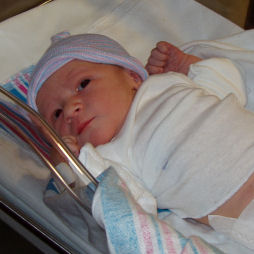I am familiar with this accident. I can't imagine looking out your window as the aircraft is taking off, as many of do, and watching the engine come lose from the pylon while it flies itself up and over the wing! :-/
Friday May 25, 1979, was a pleasant sunny day in Chicago, Illinois. It was the eve of the Memorial Day Weekend and Chicago's O'Hare International Airport was even busier than usual. At the gate, American Airlines flight 191 was preparing to depart to Los Angeles. Flight 191 had been operated by American's DC-10s since they entered service some eight years earlier. The DC-10-10 seated 270 passengers in a mixed class configuration and was very popular with travelers and the company's flight and cabin crew. The aircraft allocated for today's flight was N110AA, delivered to the airline on 02.28.72. It had proven itself an excellent aircraft and had flown nearly 20,000 hours since its delivery.
In command of today's flight was Walter Lux, 53, an extremely experienced pilot who had 22,000 hours to his name and had been flying DC-10s since their introduction to American Airlines. His crew were First Officer James Dillard, 49, who had almost 10,000 hours ,and Flight Engineer Alfred Udovich, 56, who had 15,000 hours. A cabin crew of ten attended to the passengers.
At 2.59pm the DC-10 was cleared to taxi to the holding point for runway 32R. At 3.02pm the DC-10 was cleared for take off and at a weight of 379,000 pounds started its take off run. Everything was normal during its run until, 6000 feet down the runway just before rotation, the port engine (No.1) lost power and pieces of the pylon started to fall away from the aircraft. By then, white vapour began to stream from the mounting, which was the fuel spilling from the broken fuel lines.
A few moments later the entire engine and pylon tore itself loose and toppled back over the wing and on to the tarmac behind the aircraft. As the DC-10 lifted off the port wing had dropped slightly but this was soon corrected and the aircraft climbed out steadily seemingly unaffected by the loss of one of its engines .
10 seconds later and at a height of around 300 feet it began to bank to the left. The bank quickly steepened, the nose dropped, and the aircraft started to lose height. Finally the wings went past the vertical and the aircraft was beyond recovery. The port wingtip struck the ground and the aircraft exploded in a mass fireball and disintegrated completely, 90 metres from a huge caravan park that was a few hundred metres from the end of the runway. Two residents of this park were killed in the carnage, along with the 271 on board the aircraft.


Investigation into the Accident:
Under normal circumstances an aircraft losing an engine would be able to fly on the remaining power plants still functioning, so why was this accident different? When the engine separated, it took a 3 foot section of the wing with, it ripping out vital hydraulic and electric lines in the process. The starboard slats stayed extended but the port slats retracted because of the leaking fluid, causing a stall. The crew was unaware of the retraction due to the fact that the no.1 generator powered the Captain's instrument panel, and thus the slat disagreement system. The stick-shaker had also been disabled.
On recovery of the engine/pylon assembly, it was discovered that there was a 10 inch fracture on the rear bulkhead on the pylon. 8 weeks before the accident, the aircraft went through a major check and the self aligning bearings on the bulkhead to wing attachment joints were changed. Normal procedures would involve removing the engine and pylon from the wing separately, by use of a special cradle to lower the engine, but to save on time, a new idea was adapted using a forklift truck to take the whole assembly off as one unit. This did not prove to be a good idea because of down travel on the forks. When the assembly was being put back on to the wing, a disagreement occurred between the mechanic and the forklift driver, and a sound like a gun shot was heard, which resulted in the flange on the pylon bulkhead fracturing. Unknown to the mechanics, the aircraft was put back into service with a weakened pylon assembly that seemed to be OK until that fateful afternoon when it failed under normal load conditions.


Dave :-/

























Live and learn eh?



















